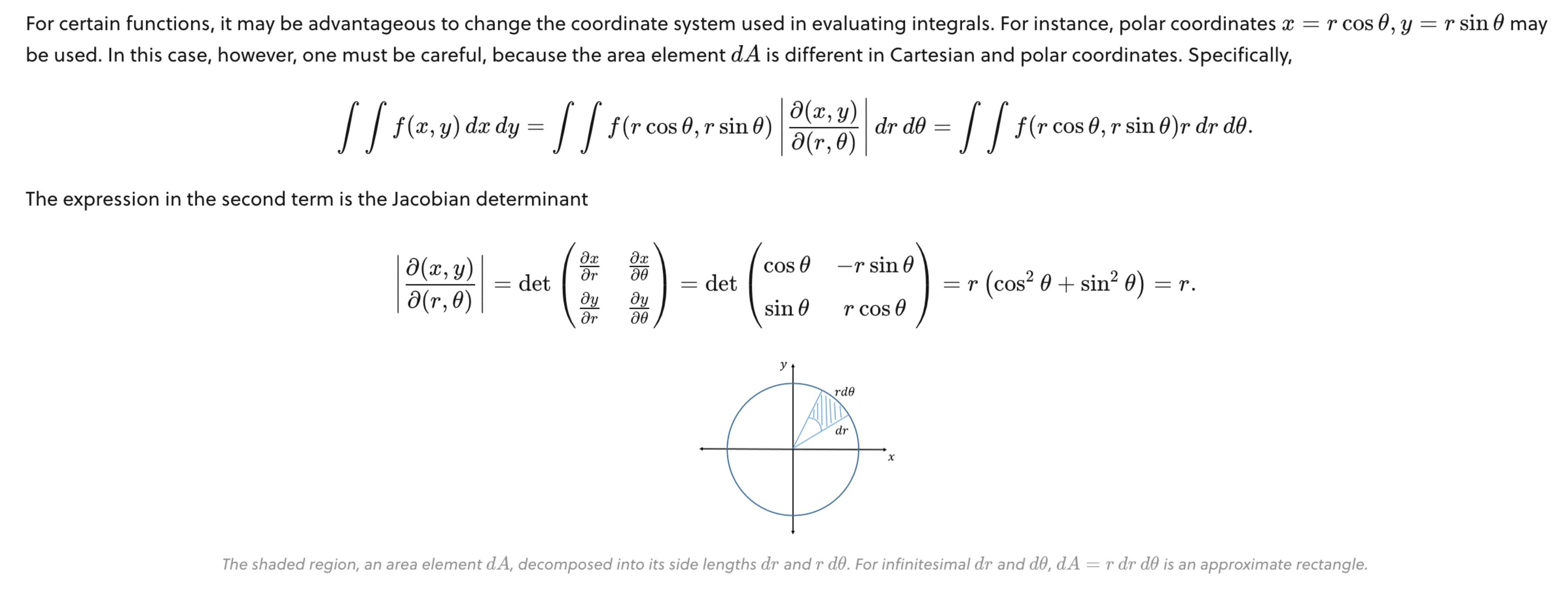When using the jacobian determinate to change variables of a double integral, how is it introduced in the first place?
From this page, it discusses the use of polar coordinates in double integrals.

In the first line, how and why does get introduced in order to change variables? What does this fraction even mean? Im pretty sure its just the absolute value of the partial derivatives with respect to the variables in the brackets. I understand why and change, but pops out seemingly out of nowhere.
My second question is: in the second equation, how does ??
Thank you
No vote yet
1 vote
Easy Math Editor
This discussion board is a place to discuss our Daily Challenges and the math and science related to those challenges. Explanations are more than just a solution — they should explain the steps and thinking strategies that you used to obtain the solution. Comments should further the discussion of math and science.
When posting on Brilliant:
*italics*or_italics_**bold**or__bold__paragraph 1
paragraph 2
[example link](https://brilliant.org)> This is a quote# I indented these lines # 4 spaces, and now they show # up as a code block. print "hello world"\(...\)or\[...\]to ensure proper formatting.2 \times 32^{34}a_{i-1}\frac{2}{3}\sqrt{2}\sum_{i=1}^3\sin \theta\boxed{123}Comments
My view is very plain and I can answer only one of your questions ( I don’t know anything about double and triple integrals or Jacobian or anything ) but when you change f(x,y) to f(rcosθ,rsinθ), the function’s inputs remains the same but changing dxdy to dr,dθ is not the same and to do this change you need to find out how dxdy changes with respect to dr,dθ, this is why I think the determinant suddenly pops up, why is it that exactly idk, I can only tell that something had to come. @Mark Hennings @Pi Han Goh will surely know this, I am sure they can answer your second question
Log in to reply
Courtesy of James Stewart textbook
Log in to reply
Thanks for this - I have the general gist of things. However, an ELI5 would be very helpful (if possible)